 Suppose electric potential varies along the x-axis as shown in the above figure the potential doesnot vary in yorz direction of the intervals shown (ignore the behaviour at the end points of the intervals) the field Ex has a maximum absolute value FB_(1)Vm−1 in the region FB_(2) its value in the region cd is FB_(3)Vm−1 then
Suppose electric potential varies along the x-axis as shown in the above figure the potential doesnot vary in yorz direction of the intervals shown (ignore the behaviour at the end points of the intervals) the field Ex has a maximum absolute value FB_(1)Vm−1 in the region FB_(2) its value in the region cd is FB_(3)Vm−1 then
The value that fills FB_(1) is
252
25
152
−50
The correct Answer is:B
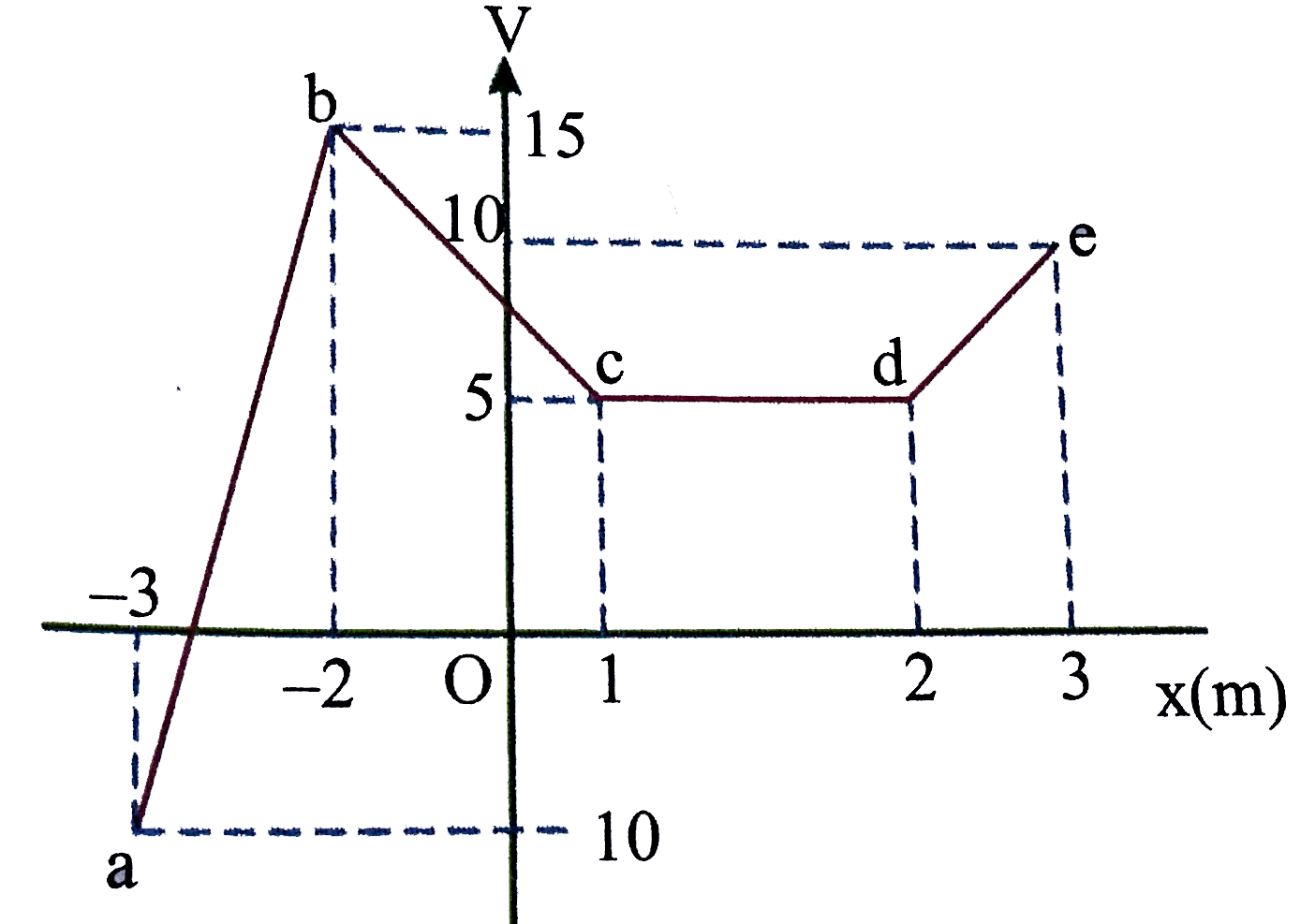
(Ex)maxValue 'FB1' in the region FB2
Ex=valueofcdisFB_(3)Vm^(-1)<br>E=-(dV)/(dx)rArr E_(ab)=-((25)/(1))=-25<br>E_(be)=((5-15)/(1+2))=(10)/(3)E_(cd)=0<br>E_(de)=-((15-5)/(3-2))=-10<br>rArr (E_(x))_(Max)=25V//m^(-1)rArr FB_(2)isab<br>Tak∈gthevaluesofE_(ab),E_(bc),E_(cd),E_(de).TheplotofE_(x)Vsxwillbeasshown∈Doption.<br>Fora rarr bpartV =25x+65<br>:.when V=0⇒x=−6525=−135m
Topper's Solved these Questions
- BOOK - NARAYNACHAPTER - ELECTROSTATICS AND GAUSS LAWEXERCISE - Passage V3videos
ELECTROSTATICS AND GAUSS LAW
- BOOK - NARAYNACHAPTER - ELECTROSTATICS AND GAUSS LAWEXERCISE - Passage VI3videos
ELECTROSTATICS AND GAUSS LAW
- BOOK - NARAYNACHAPTER - ELECTROSTATICS AND GAUSS LAWEXERCISE - Passage III3videos
ELECTROSTATICS AND GAUSS LAW
- BOOK - NARAYNACHAPTER - ELECTROSTATIC POTENTIAL AND CAPACITANCEEXERCISE - ADDITIONAL PROBLEMS14videos
ELECTROSTATIC POTENTIAL AND CAPACITANCE
- BOOK - NARAYNACHAPTER - EXPERIMENTAL PHYSICSEXERCISE - Comprehension type6videos
EXPERIMENTAL PHYSICS
Similar Questions
Knowledge Check
- Question 1 - Select One
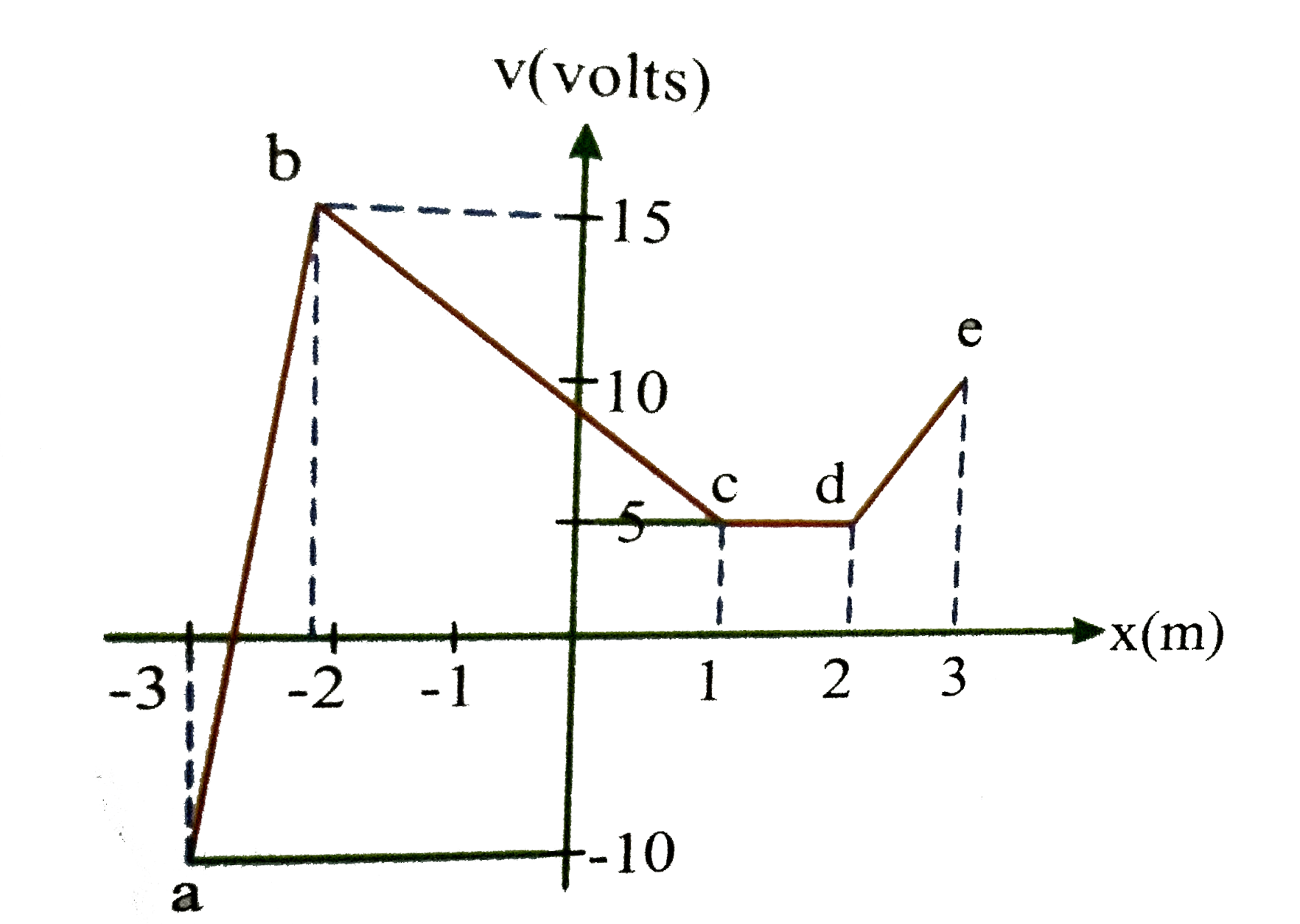 Suppose electric potential varies along the x−aξs as shown in the above figure the potential doesnot vary in yorz direction of the intervals shown (ignore the behaviour at the end points of the intervals) the field Ex has a maximum absolute value FB_(1)Vm−1 in the region FB_(2) its value in the region cd is FB_(3)Vm−1 then
Suppose electric potential varies along the x−aξs as shown in the above figure the potential doesnot vary in yorz direction of the intervals shown (ignore the behaviour at the end points of the intervals) the field Ex has a maximum absolute value FB_(1)Vm−1 in the region FB_(2) its value in the region cd is FB_(3)Vm−1 then
The region that fills FB_(2) isAabBdeCbcDdc - Question 2 - Select One
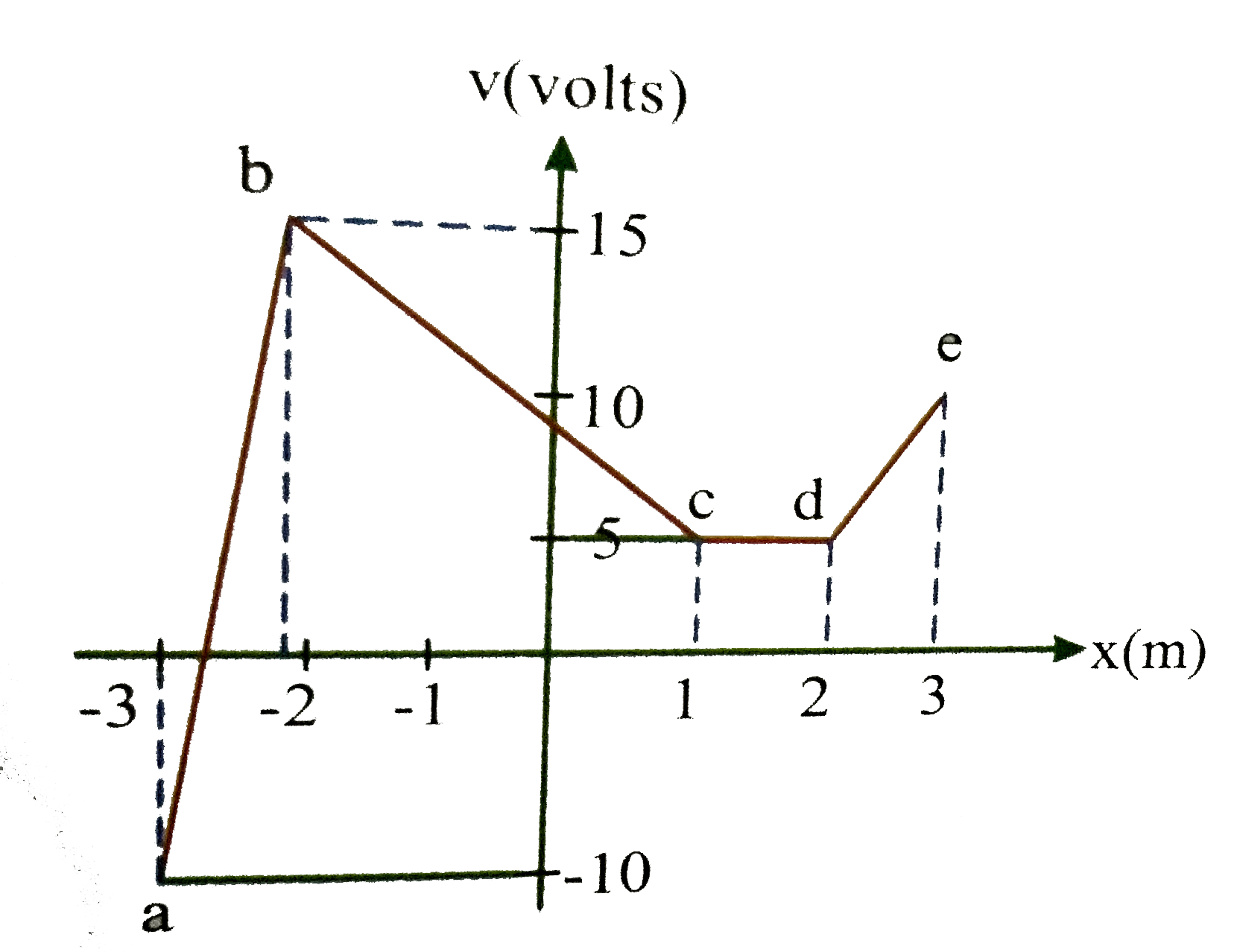 Suppose electric potential varies along the x-axis as shown in the above figure the potential doesnot vary in yorz direction of the intervals shown (ignore the behaviour at the end points of the intervals) the field Ex has a maximum absolute value FB_(1)Vm−1 in the region FB_(2) its value in the region cd is FB_(3)Vm−1 then
Suppose electric potential varies along the x-axis as shown in the above figure the potential doesnot vary in yorz direction of the intervals shown (ignore the behaviour at the end points of the intervals) the field Ex has a maximum absolute value FB_(1)Vm−1 in the region FB_(2) its value in the region cd is FB_(3)Vm−1 then
The plot Exvsx isA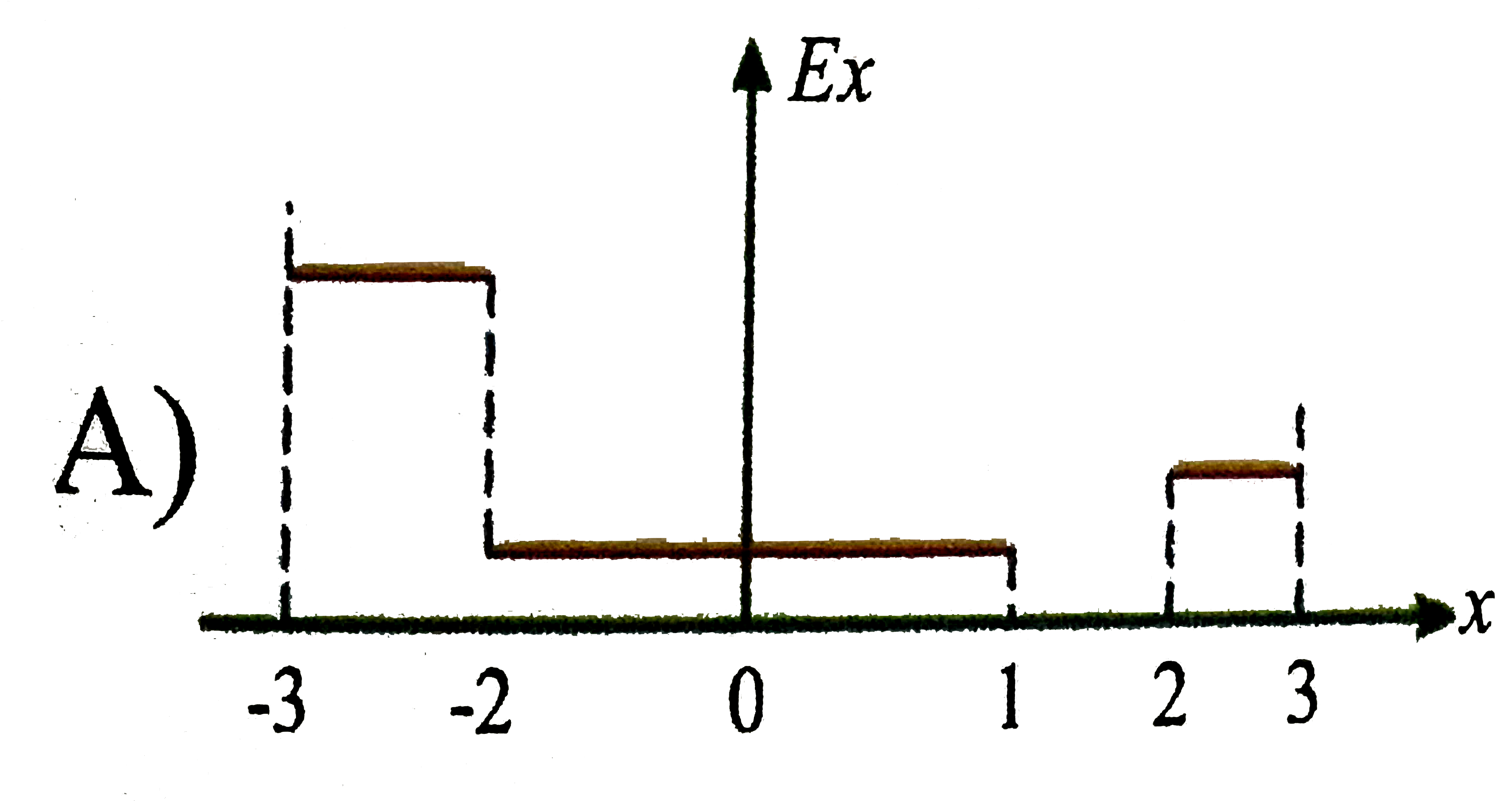 B
B C
C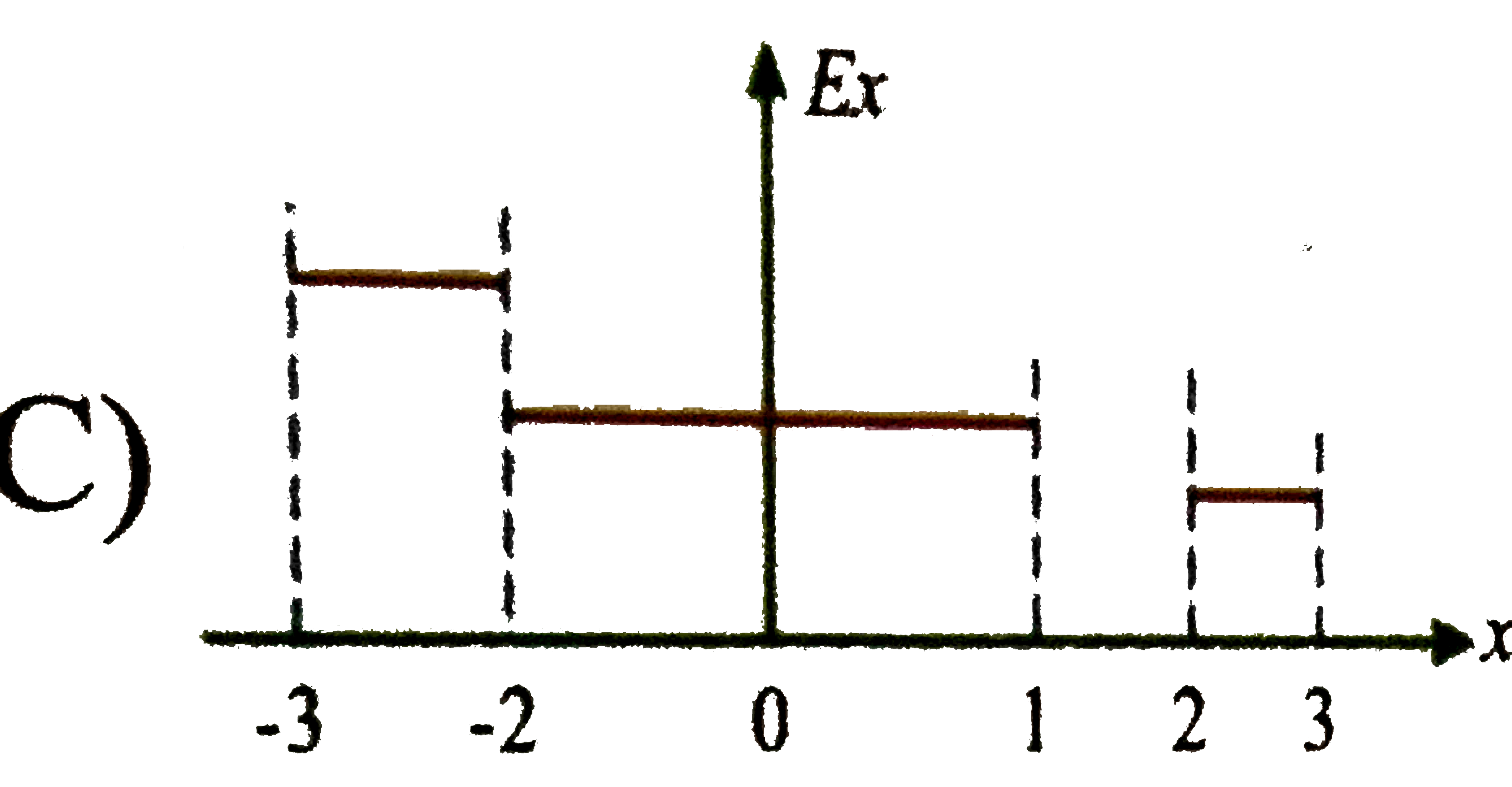 D
D
- Question 3 - Select One
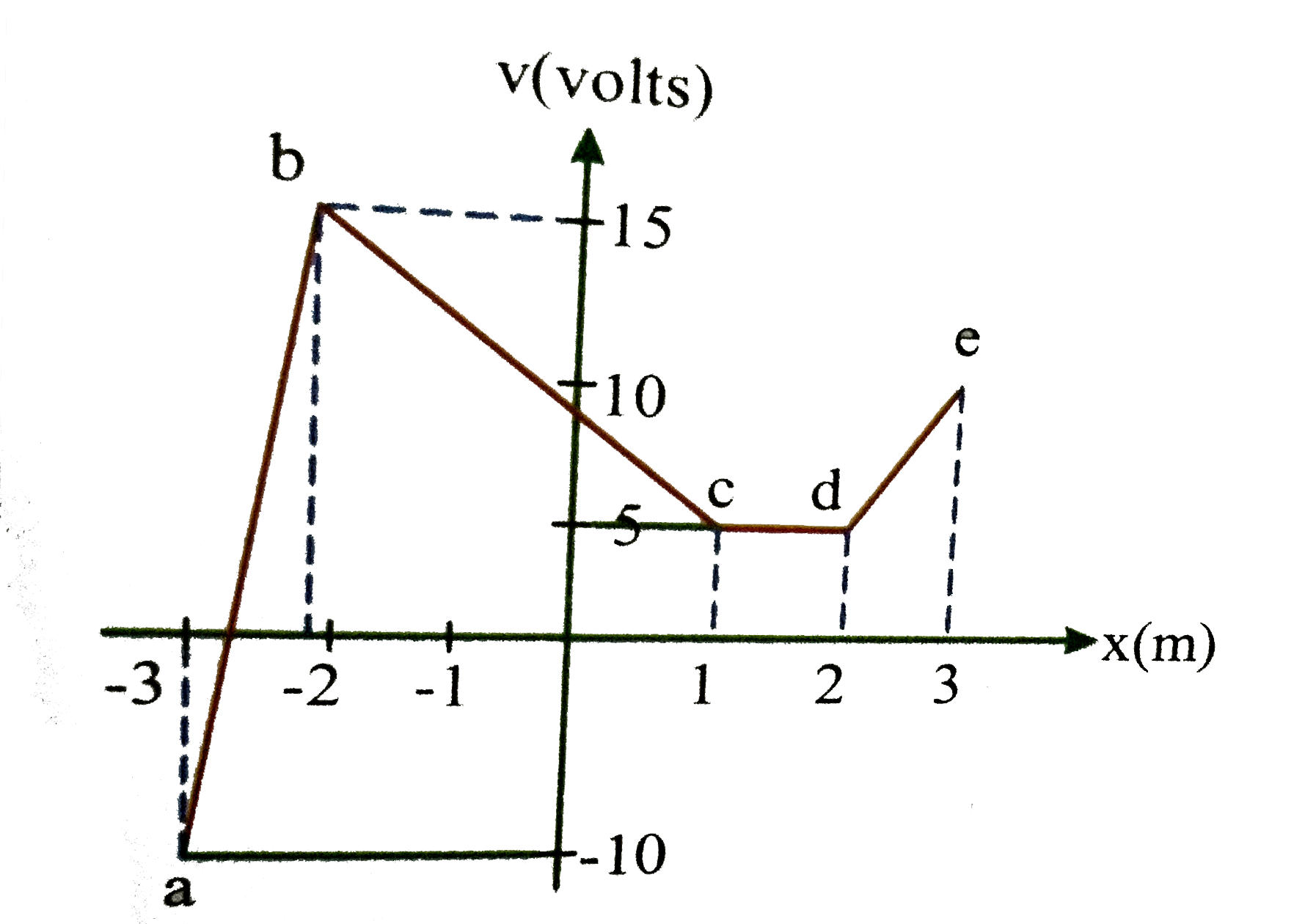 Suppose electric potential varies along the x-axis as shown in the above figure the potential doesnot vary in yorz direction of the intervals shown (ignore the behaviour at the end points of the intervals) the field Ex has a maximum absolute value FB_(1)Vm−1 in the region FB_(2) its value in the region cd is FB_(3)Vm−1 then
Suppose electric potential varies along the x-axis as shown in the above figure the potential doesnot vary in yorz direction of the intervals shown (ignore the behaviour at the end points of the intervals) the field Ex has a maximum absolute value FB_(1)Vm−1 in the region FB_(2) its value in the region cd is FB_(3)Vm−1 then
In the Vvsx curve ,the potential possesses a zero value atAx=−125mBx=−−513mCx=−−135mDx=−−145m
In an electric field region, the electric potential varies along the x-axis as shown in the graph. The x components of the electirc field in the regions for the intervals PQ and QR as market in the garph, in N/C, are respectively:
 View Solution
View SolutionThe variation of electric potential with distance from a fixed point is shown in figure. What is the value of electric field at x=2m -
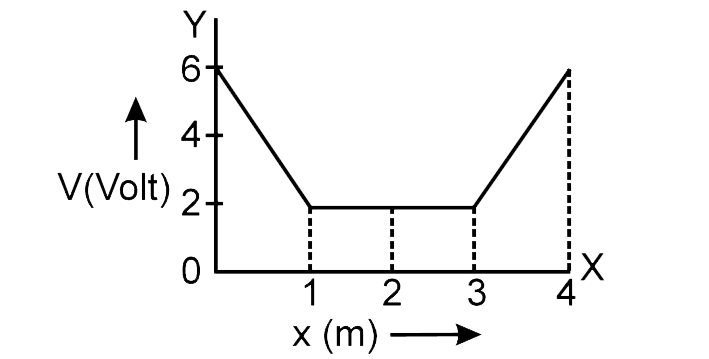 View Solution
View SolutionThe electric potential at any point x,yanz in metres is given by V=3x2. The electric field at a point (2,0,1) is
View SolutionA uniform electric field to 100 Vm−1 is directed at 60∘ with the positive x-axis as shown in figure. If OA= 2 m, the potential difference VO−VA is
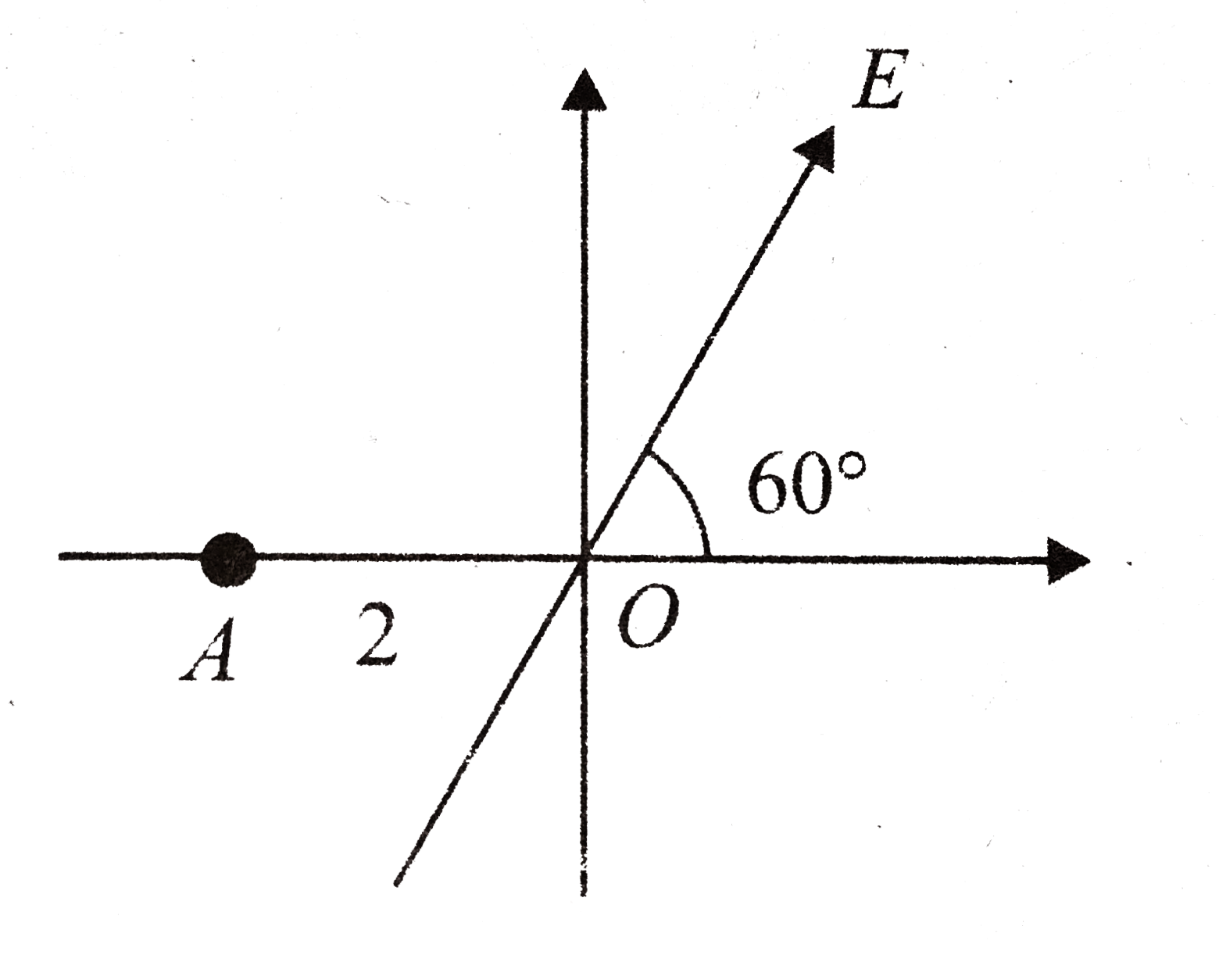 View Solution
View SolutionA unifrom electric field having a magnitude E0 and direction along the positive X-axis exists. If the protential V is zero at x=0, then its value at X=+x will be
View Solution

